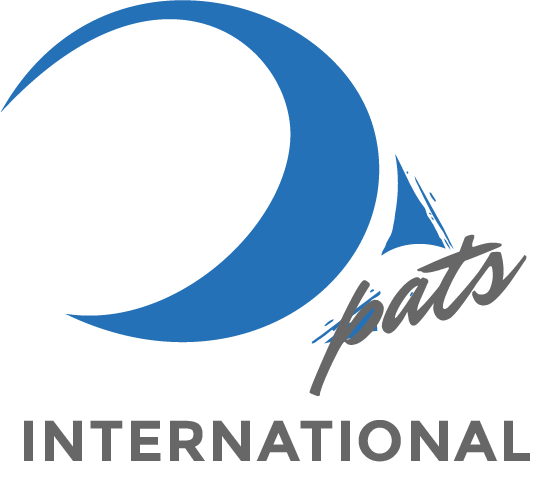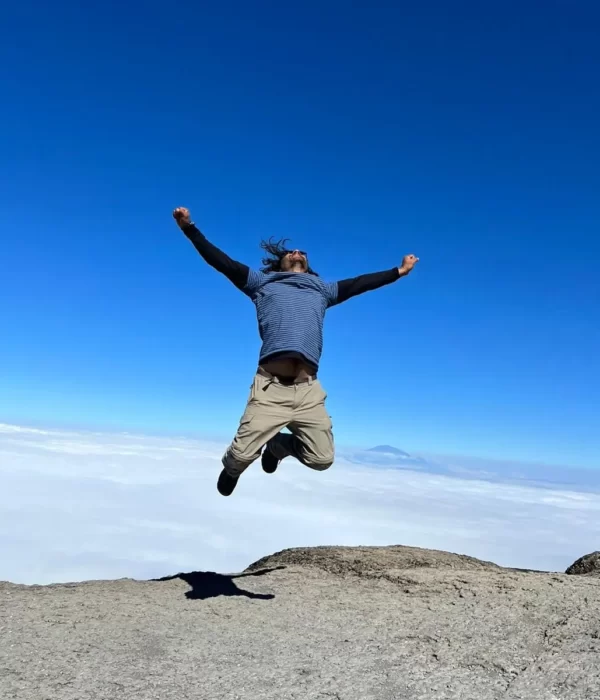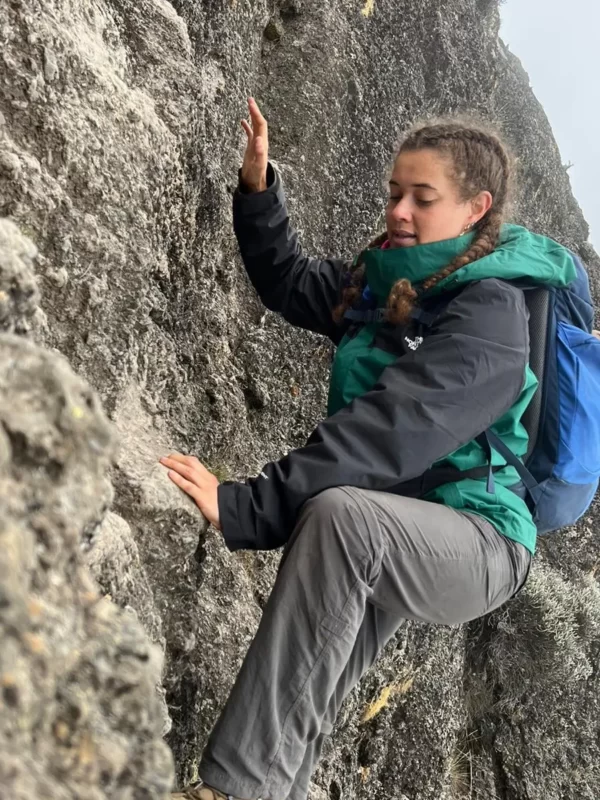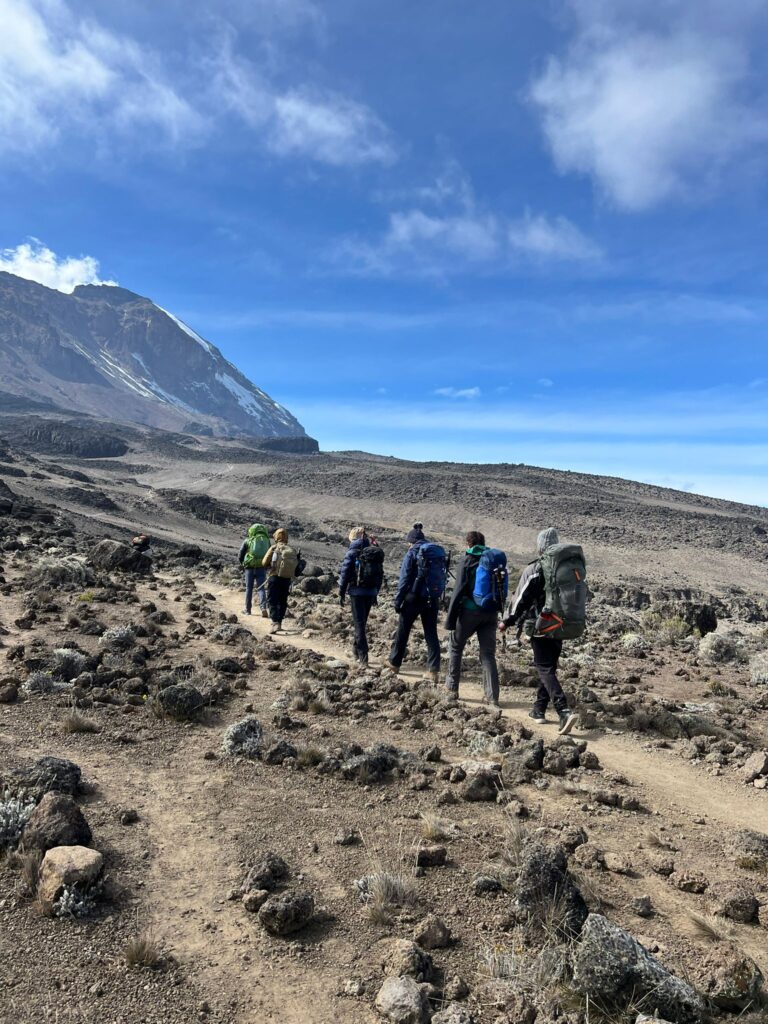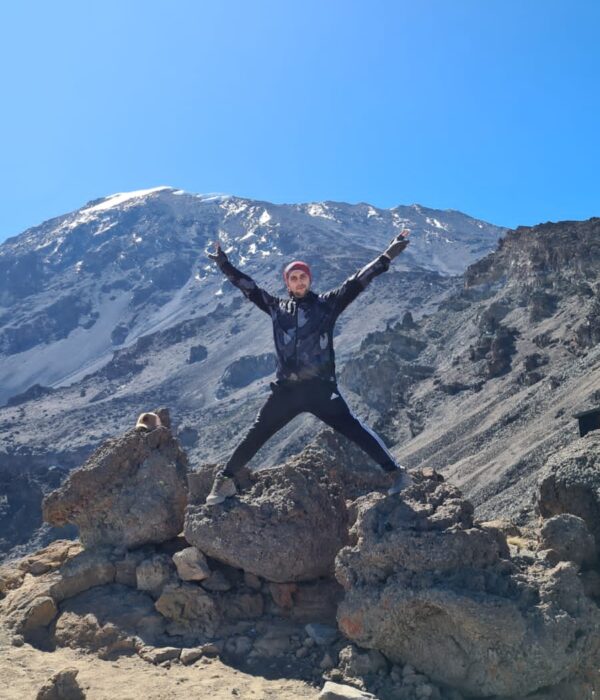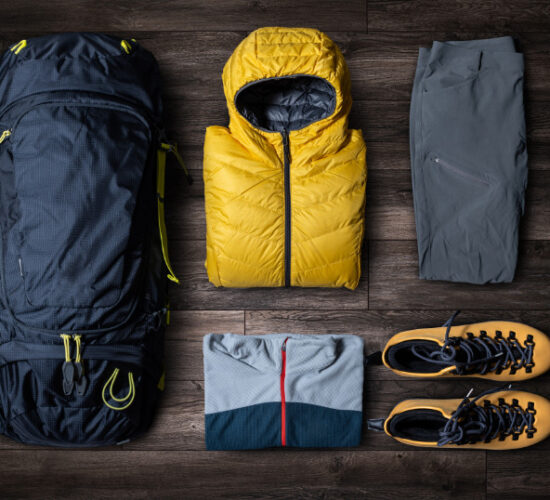The weather on Mount Kilimanjaro is mainly determined by altitude and time of day, rather than seasonal changes that cause wide temperatures. This is mainly to due to the mountain’s proximity to the equator, ocean and its height. In a nutshell, the winds that move across the Indian ocean are interrupted by the mountain’s masif, therefore drawing up wind and moisture toward the summit. This results in low temperatures, rain and even snow. (1) On the other hand, wind coming from the northeast of Kilimanjaro cause short rains on the mountain. As these winds haven’t traveled across an ocean, the rains tend to be shorter and less intense than the long rainy season caused by trade winds. This is also why most of the rainfall during November occur on the Rongai route compared to any other trail on Mount Kilimanjaro. (2)
Table Of Contents
What Is The Climate Of Mount Kilimanjaro?
- Kilimanjaro Weather In January
- Kilimanjaro Weather In February
- Kilimanjaro Weather In March
- Kilimanjaro Weather In April
- Kilimanjaro Weather In May
- Kilimanjaro Weather In June
- Kilimanjaro Weather In July
- Kilimanjaro Weather In August
- Kilimanjaro Weather In September
- Kilimanjaro Weather In October
- Kilimanjaro Weather In November
- Kilimanjaro Weather December
What I wish I knew before climbing Kilimanjaro is that the mountain creates its own weather, which can be extremely variable and difficult to predict. Eventhough the best time to climb Kilimanjaro coincides with the dry seasons, rain and snow are possible at any time of the year. As you get higher up, the temperatures can vary dramatically. One moment you can be trekking in baking sunshine and the next you’ll be layering up against a bitter wind. This is why it’s important to know how to prepare for Kilimanjaro before committing to the climb.
What Is The Climate Of Mount Kilimanjaro?
- Cultivation Zone — the cultivation zone sits at an altitude of 800-1,800m (2,600-6,000ft) and invites precipitations of 500 to 1,800mm (20-70in). This area gets plenty of annual rainfall and is comprised of mostly farmland. That’s because this area is irrigated by underground channels, tunneling through the earth, from the forest zone above. (3)
- Forest Zone — the forest zone sits at an altitude of 1,800-2,800m (6,000 to 9,200ft) and has precipitations of 2,000-1,000mm (79-40in) during the rainy seasons. This zone is filled with tropical rainforests that serves to absorb most of the moisture coming off the mountain, which form underground streams and springs on Kilimanjaro. Conditions in this region are usually warm and humid, with mists forming under the dense canopy. Thick clouds are not uncommon in this area and it can be muddy underfoot.
- Heath/Moorland Zone — this zone sits at an altitude of 2,800-4,000m (9,200-13,200ft) with precipitations ranging from 1,300mm to 530mm (51-21in). Temperatures can remain warm throughout the day but could drop significantly at night. The humidity lessens, the trails are dryer, and generally, it’s a more comfortable hiking experience. Although rain can occur pretty much anywhere on the mountain, it tends to be minimal in this zone.
- Alpine Desert Zone — Expect day time temperatures to continue to be warm in the Alpine Desert, but with much colder conditions in the evening. Here, it is not uncommon to be camped well above the clouds, which makes for an enchanting sight on a clear, starlit night. This zone sits 4,000-5,000m (13,200-16,500ft) and has precipitations 250mm (10in).
- Arctic Zone — It’s very cold here, with blustery winds and nighttime temperatures well below freezing. As you set off for the summit, there may be ice and snow underfoot. It’s bitterly cold, even at midday, and the sun’s radiation is harsh. The precipitation here is 100mm (4in) and the zone sits above 5,000m (16,500ft). Most precipitation, within this region, falls as snow.
1. Kilimanjaro Weather In January
The average Kilimanjaro temperatures in January starts from 29.0°C (84.2°F), during the day, and can drop to 10.0°C (50°F), as you sleep at night. Temperatures drop to 0.0°C (32.0°F) and below freezing, the further along you are from the mountain’s base. (4) January is the beginning of the short dry season, so if it rains, expect the amount of rain in January to be normal with an average precipitation of 60mm (2.4in). (5)
2. Kilimanjaro Weather In February
The average minimum temperature in February at night, on Mount Kilimanjaro, is 10.0°C (50°F). Eventhough the month is often dry, the amount of rain in February is high with an average precipitation of 100mm (3.9in). Expect daytime temperatures to lie around 29.0°C (84.2°F), as you trek the mountain’s base, before gradually getting to an average of 10.0°C (50°F) as you near the summit.
3. Kilimanjaro Weather In March
March marks the beginning of the long rainy season on Mount Kilimanjaro, so expect average nighttime weather temperatures to start at 11.0°C (51.8°F). You’re also likely to encounter subzero temperatures, higher up the mountain, and experience average precipitations of 170mm (6.7in). If you’re lucky, the average maximum daytime temperature, at the start of your hike, may lie around 27.0°C (80.6°F).
4. Kilimanjaro Weather In April
April is usually one of the wettest months on Kilimanjaro, with nighttime temperatures dropping as low as 13.0°C (55.4°F). The average maximum daytime temperature lies around 25.0°C (77°F), with an average precipitation of 370mm (14.6in). This month should be avoided at all cost however, if you’re tight on schedule, trek along either the Rongai trail or Marangu route on Kilimanjaro. This is because Rongai receives less precipitation during the rainy seasons whereas the huts, on the Marangu route, make for comfortable accommodations during long stormy nights.
5. Kilimanjaro Weather In May
April’s rainy weather conditions continue over to May, with an average precipitation of 230mm (9.1in). As the month nears the the long dry season of the year, you can expect very pleasant daytime temperatures of 22.0°C (71.6°F) and minimum temperatures of 11.0°C (51.8°F) at night. (6) However, as you near the summit, temperatures can drop as low as -24.0°C (-11.2°F).
6. Kilimanjaro Weather In June
June marks the tail-end of the wet season and the beginning of the long dry season of the year, so expect the average maximum daytime temperature to lie around 21.0°C (69.8°F) and to drop to 8.0°C (46.4°F) during the night. The amount of rain in June is normal with an average precipitation of 50mm (2.0in).
7. Kilimanjaro Weather In July
July is a dry month with an average precipitation of 20mm (0.8in) rain. This makes it one of the driest months of the year, with the average maximum daytime temperature hovering around 20.0°C (68°F). The disadvantage of trekking during this month is that the trails can become quite busy, however some people welcome the opportunity to chat with other groups at campsites. Expect nighttime temperatures to drop to an average of 9.0°C (48.2°F), further reaching subzero temperatures near the summit.
8. Kilimanjaro Weather In August
August is a dry month with an average of 25mm (1.0in) rain. The average maximum daytime temperature lies around 22.0°C (71.6°F) and can drop to 8.0°C (46.4°F) at night. August is known as one of the best months to visit Mount Kilimanjaro but it also tends to get overcrowded.
9. Kilimanjaro Weather In September
September is an ideal month for climbing Kilimanjaro, which makes this one of the busiest months on the mountain. The daytime temperatures around this time is 24.0°C (75.2°F), with an average of 25mm (1.0in) rain. Although extreme cold and high winds are normal in the alpine and arctic zones, expect dryer conditions and excellent mountain views during your hike. The average minimum temperature during the night is 8.0°C (46.4°F).
10. Kilimanjaro Weather In October
Weather conditions during October have a comfortable average temperature of 26.0°C (78.8°F) during the day and temperatures of 11.0°C (51.8°F) during the night. The short rains may start to kick in towards the end of the month, but after four months of dry weather, this shouldn’t be a major concern since the average precipitation during this time is 40mm (1.6in).
11. Kilimanjaro Weather In November
The amount of rain in November is high with an average precipitation of 110mm (4.3in). Conditions can be very wet, muddy and slippery, as is the case throughout the long rainy season. Furthermore, expect ground temperatures to drop below freezing levels at higher altitudes. However, the average minimum temperature during the day is 27.0°C (80.6°F) and 10.0°C (50°F) at nighttime.
12. Kilimanjaro Weather In December
The average minimum temperature in December is 10.0°C (50°F) at night and an average maximum temperature of around 28.0°C (82.4°F) during the day. The short rainy season often drifts into December however, due to the looming festive holidays, this is still a popular time to hike Mount Kilimanjaro. The precipitation during this time has an average of 100mm (3.9in) and, as you approach the summit, you’ll experience extreme winds and subzero temperatures.
